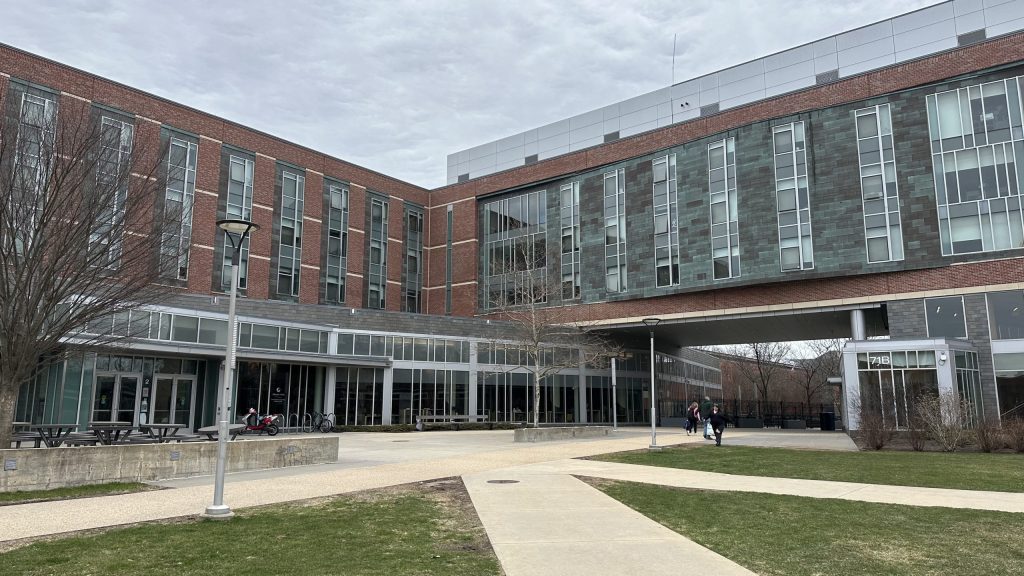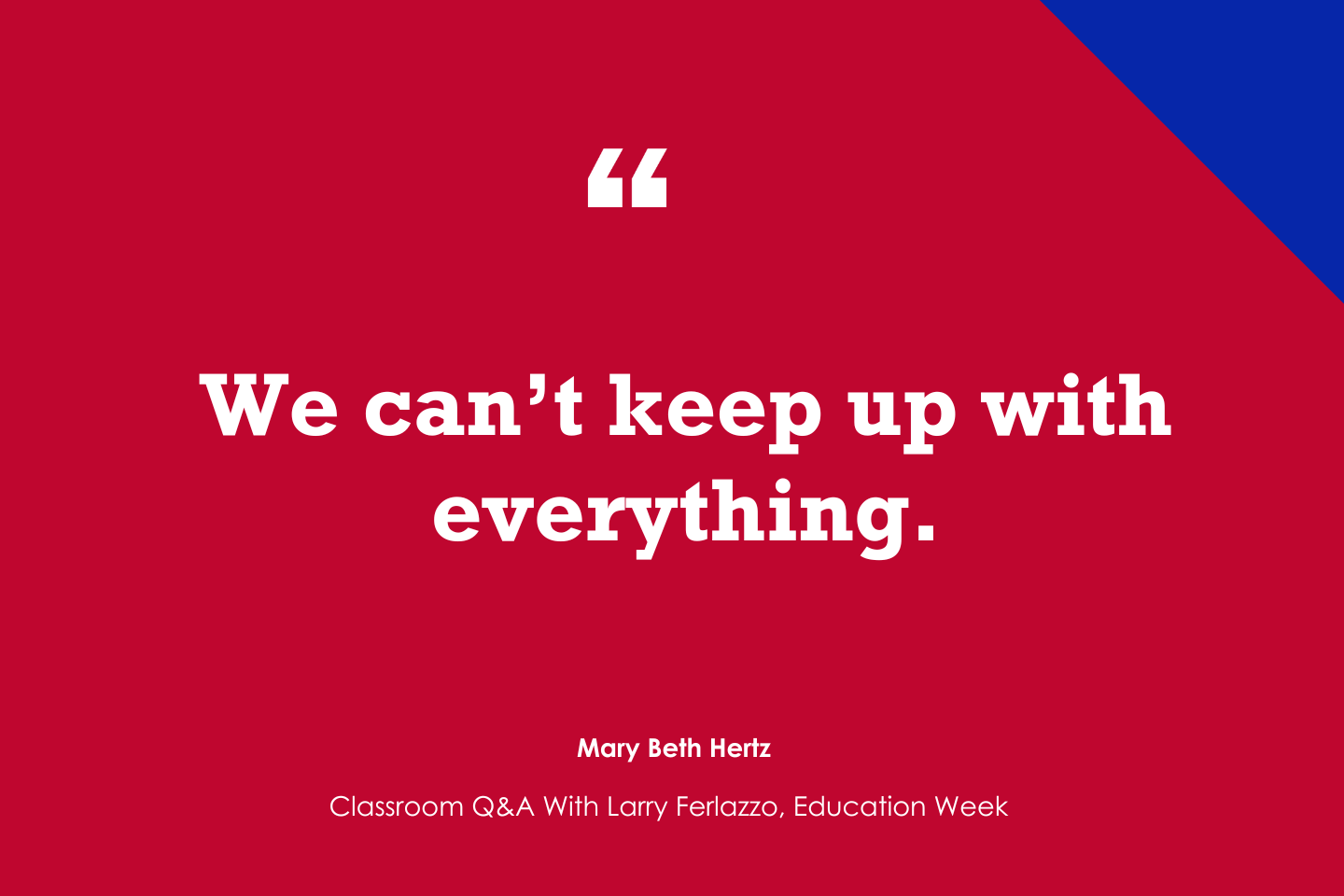Student loans aren’t the only kind of university debt. Colleges and universities themselves have borrowed billions, mostly to keep building facilities they may or may not actually need as enrollment declines. Today, nearly 10 cents of every dollar in university budgets goes to pay the interest on institutional debt.
Colleges and universities now collectively owe around a quarter of a trillion dollars, according to the Moody’s bond-rating agency. The annual cost of servicing this debt is $48 billion, or $750 per student at public and $1,289 at private institutions. Several recent college closings were caused by unmanageable debt.
Much of the money has gone to new buildings, even at a time when some instruction is moving online and when existing buildings need billions worth of repairs. Some has been spent on amenities meant to attract more students as enrollment declines. But many colleges have simply ended up with more debt, even as they have fewer customers to pay for it.
Curious about how much your college owes, or the one that you’re considering attending. We’ll show you how to find out, at the end of this transcript.
“College Uncovered” is made possible by Lumina Foundation.
Listen to the whole series
TRANSCRIPT
Scroll to the end of this transcript to find out more about this topic, and for links to more information.
Jon: So, Kirk, how’s the food?
Kirk: It’s not bad, Jon. I got the salad and a slice of pizza. It’s a little greasy.
Jon: Yeah, I had the greasy pizza, too. We’re in the dining room at Marsh Hall. It’s a really nice new dorm with a fitness room, video consoles, pool tables, flat-screen TVs. And it’s next to a bike path with great views of a salt marsh. That’s all here on the campus at Salem State University.
Kirk: Salem, Massachusetts. Famous for all those witches.
Jon: That’s right. But I’ve got something even scarier for you, Kirk. We talk a lot about student loan debt, but universities also borrow an enormous amount of money to build places like where we’re sitting right now. This relatively small public university has been on a building boom with more to come. It’s built three dorms, a parking garage, and a brand-new fitness center. And while it was doing all that, its enrollment was declining. That’s the kind of higher education debt you don’t hear about as much. But students end up paying for this, too. Salem State pays $16 million a year just in interest on what it borrowed to build all this stuff.
Kirk: Wow. That’s crazy. On top of how expensive colleges are already. So all that institutional debt ends up putting more of a burden on students and families who have to pay for it.
This is College Uncovered, from GBH News and The Hechinger Report, a podcast pulling back the Ivy to reveal how colleges really work. I’m Kirk Carapezza, with GBH …
Jon: … and I’m Jon Marcus at The Hechinger Report.
Kirk: Colleges don’t want you to know how they operate. So GBH …
Jon: In collaboration with The Hechinger Report, is here to show you.
Today on the show: “Red Ink.”
So universities and colleges nationwide have kind of an edifice complex. Even though the number of students continues to go down, they keep building and building. And to do that, they’re borrowing tens of billions of dollars a year. The cost of paying that money back adds to the already high price of college.
Here at Salem State, students pay more than $3,300 per year, per student, to service the university’s debt, through dorm charges and other fees. We got that number from a faculty task force that’s been critical of the process. We talked to the university, too. It doesn’t dispute the number, but it says that students asked for these new facilities and that it’s constantly restructuring the debt to save money.
Students walking around the campus say they weren’t aware that part of what they’re paying goes to pay off the university’s debt.
Greg O’Connor: No, I was not.
Kirk: Greg O’Connor is a freshman and a member of the Student Government Association.
Greg O’Connor: Students aren’t really satisfied here with the dining. So the fact that they took out that much money to build the dorm halls and like, dining, still like a student concern, that’s that’s really wild to me. I didn’t know that.
Jon: Mackenzie Trainor was surprised to hear about this, too.
Mackenzie Trainor: My mom pays for me to be here. I love my mom a lot, so I mean. … My dorm’s disgusting. That’s a lot of money going into dorms that are not …
Kirk: Why is it disgusting?
Mackenzie Trainor: Just different issues. Like, my shower for some reason just gets dirty very easily. The rust is disgusting.
Jon: Is it one of these new dorms?
Mackenzie Trainor: Actually, yeah. Charlotte Forten Hall. I do love this school, but I mean, I’m recently having, like, financial aid issues. I think it’s interesting to find out some of the things about where funding’s going and where the money’s going.
Jon: It’s pretty quiet on the campus, except between classes, when students start crisscrossing the quad. Nearly all the students on this campus, 95 percent of them, qualify for financial aid. And those new dorms aren’t helping the half who commute.
Brendan Sheehan is a junior majoring in business and music. He runs a landscaping company with his brothers to help pay for the cost of going here.
Brendan Sheehan: Yeah, I just I just got off work.
Jon: What’s the music for? What are you planning to do?
Brendan Sheehan: Not a solid plan yet, but I just love music, so I’ve always stuck with that.
Kirk: Favorite band?
Brendan Sheehan: Favorite band? Oof, so many to choose from. But I got to go with the Red Hot Chili Peppers.
Kirk: All right,that’s a good choice.
Brendan Sheehan: Definitely.
Jon: New dorms are nice, but Sheehan said he’d be just as happy paying less for college and roughing it a little.
Brendan Sheehan: I could honestly, personally handle, you know, 5-foot-by-10-foot, you know, like, I’d be okay with living like that. I assume other people might think otherwise, but personally, I just, you know, I know that avoiding debt as much as possible is the goal.
Jon: But not necessarily for colleges and universities. And it isn’t only here at Salem State.
Kirk: Okay, so colleges and universities are borrowing vast sums to put up new dorms and student centers and other buildings, even as their enrollments decline. The actual amount of borrowed is estimated to be more than $32 billion a year in public bond debt. Most of it has gone to build new buildings that universities hope will attract students. And we’re not talking about buildings paid for by wealthy alums or giving campaigns. Forty percent of new construction on campuses is financed with debt.
Howard Bunsis: Most of the borrowing is for buildings, and the majority of those buildings are dorms. Universities have come to believe universally that dorms, that having the newest, fanciest wave pool, cool kitchens, cool whatever, are the answer in the competitive market to attract students to come to the university.
Jon: Howard Bunsis is a professor in the business school at Eastern Michigan University who studies colleges and debt. Servicing this debt now costs about 10 cents out of every dollar in university operating budgets. It’s also a major reason why a lot of small colleges are closing. We talked in Episode 4 about the large number of colleges closing these days. Many of them have more debt than assets. Ohio Valley University had $18 million in assets, but $30 million worth of liabilities when it shut down. The College of New Rochelle had $77 million worth of assets and $87 million in liabilities. I could go on and on. Cazenovia College in New York. Iowa Wesleyan. Birmingham Southern in Alabama. You get the idea. I asked Howard Bunsis what kind of colleges are doing this.
Howard Bunsis: Whether we’re talking about a flagship public, a regional public, a very wealthy private — it goes across the spectrum of universities.
Jon: So most of this is for dorms.
They figure that the proceeds they’re going to get, the revenue they’re going to generate from these dorms is going to more than cover it. And in addition, up until a year ago, interest rates in our country were very, very low. So they figured, you know what? It’s almost like free money — 3percent, 2 percent. So there was a lot of borrowing around the country by universities, no doubt. And a lot of it was for dorms, but a lot of it was generated by the low interest rates. Now interest rates are not so low anymore.
Jon: Let’s be clear, though. Just like people who have a mortgage, a lot of colleges can handle the debt, right?
Howard Bunsis: Well, let’s start at the top: flagship public universities. They have absolutely no trouble borrowing money and paying it back. They have tuition coming in. They have grants and contracts and all the research they do. They have state appropriations. They have a lot of people donating money. They have such a wonderfully diverse revenue source. They’re not going to have any trouble.
Jon: Okay. But but what about other schools like Eastern Michigan?
Howard Bunsis: You come to a place where I teach, a regional public university. Well, the grants and contracts aren’t that great. There’s not that much money coming in from gifts. So they’re relying on tuition revenue and the state appropriation. So it’s a little more problematic.
Jon: Should prospective students be wary about going to small, tuition dependent private colleges that have a lot of debt?
Howard Bunsis: The small private university that’s borrowing a lot of money, and they have one revenue source that I think is — can I use the word problematical? Is that is that a fair word? I would be very wary of a private university that gets more than 80 percent of its revenue from tuition only and is borrowing a lot of money.
Jon: So how do you tell if the college you’re considering has too much debt?
Howard Bunsis: One of my pet peeves, and [for] transparency, I think every university that takes any federal money, including a private university that gets federal money for student loans, should put their audited statements on their website for people to see. Because remember, with debt, it’s not like you have to write a check. Like when you borrow. If you borrow $200,000 in your mortgage, you don’t have to write a $200,000 check tomorrow. You have to write a monthly check. And so that’s why looking at the total cash, the two investments, that ratio should be above one.
Jon: That sounds complicated, but but you’re saying that if there’s a problem, it’s going to stick out, right?
Howard Bunsis: So I looked at this in college in West Virginia, which went under. Basically they had cash and investments of $6 million and debt of $28 million, and they had negative cash flows. So that’s troubling.
Jon: Yeah. You’re talking about Alderson Broaddus University, which closed last year just a few days before the start of the school year. It couldn’t even pay its utility bills.
Howard Bunsis: The debt issue that we’re talking about is really about small privates that put all their eggs in one basket, borrowed too much money to build dorms. The people didn’t come. The enrollment didn’t increase. The cash flows were not generated. But the principal has to be paid. The interest has to be paid.
Kirk: Back at Salem State, it was concerned faculty who took the initiative and investigated all the debt the university took on to build its new dorms, gym and that dining hall with the greasy pizza. Joanna Gonsalves is a professor of psychology, and she says it was a risky strategy from the very start.
Joanna Gonsalves: That gamble wasn’t good, because, more and more, our campuses, our students can’t afford that. It was the gamble that having those beautiful, campus facilities make our campus appealing to somebody from New Hampshire, Rhode Island, California. That really, actually never came to pass.
Jon: And yet now everybody’s paying for it.
Joanna Gonsalves: Yeah, everybody’s paying for it.
Jon: So we’ve been talking about shiny new buildings and how colleges borrow to pay for them. But that new state-of-the-art computer science building also comes at the cost of other projects and priorities. Even as they take on more debt to put up new buildings, some colleges are neglecting their existing infrastructure. Universities now have — listen to this, Kirk — $112 billion worth of deferred maintenance and repairs.
Kirk: That’s a lot of money. And I’m still thinking about the gross dorm rooms and the antiquated bathrooms or heating systems on college campuses. The things you know you don’t see on a college brochure.
Jon: Yeah. So analysts say it’s a maintenance backlog that’s now become impossible to catch up with. It means that the condition of some buildings is getting really bad.
Alice Roberts Davis: Generally what happens is, as buildings age, we should go in and replace certain aspects — plumbing, roof, heating, electrical, mechanical. All those systems need to be maintained and replaced over time. And if we don’t have the funding to do that, that becomes an item of deferred maintenance. And as those things go on without replacement, they become more critical, at risk for failure.
Kirk: That’s the person with the very tough job of overseeing this issue on one of America’s biggest campuses.
Alice Roberts Davis: I am Alice Roberts Davis. I am vice president for university services at the University of Minnesota. We have about 1,000 buildings, and more than half of our buildings are more than 50 years old. We have a number of buildings that are more than 100 years old. And so as you think about your own home and what types of things need to be repaired in your own home, if you had a home that was 50, 60 or 70 years old, you would definitely need to replace the roof. You need to replace the windows and probably work with the foundation or plumbing. Some sort of structural work would probably be necessary in our university. Buildings are no different. All of those things need to be done on a regular cadence.
Kirk: But often they haven’t been. This can affect the average college experience. These are not the buildings that gets showcased during a college tour, or when the college is trying to make a good first impression and get you the student to enroll.
Alice Roberts Davis: They want it to look stately. They want it to look old. They want it to look like those universities back east that have those long-tenured buildings and look like great thinkers have paced those corridors. And we want them to have that original character, but that costs money for us to maintain them in a way that makes them continue to be functional.
Jon: But Davis says there’s more to this than pretty buildings.
Alice Roberts Davis: Students who have had a great K-through-12 experience with wonderful facilities come to our university, and seeing something that feels like a step backward as far as facilities go — they may be looking at a lab that is the same lab that their mom and dad used, versus something that’s really state of the art in their in their high school. When that happens, they tend to look at surrounding states, other universities, other options that they may have. And what we find is when they go to those other schools, in other states, they tend to form professional and personal relationships that cause them to stay. That’s a long-term workforce issue for our state.
Jon: The condition of the campus really has a far-reaching impact. What are some other ways that it matters? I mean, schools send a message not only to students, but to faculty with the quality of their infrastructure.
Alice Roberts Davis: It’s so important that we attract the best faculty so that we can get the best students here. And when faculty assess the facilities and see that they may or may not be able to get the grant funding that they need because of the facilities that they’re being offered, they make really difficult decisions that may or may not include our university.
Kirk: Okay. So what should you, the consumer, look for when you visit a college campus? Here are some ideas.
Alice Roberts Davis: I think the parents should look at what the child’s major is. They should be thinking about what type of facility they need. What equipment is there that will help prepare them for their workforce of the future? Or do they have the faculty there that can prepare them for the workforce that they plan to enter?
Jon: So, to recap, wander around to campus when the official tour is over and look for yourself, especially at the buildings where you’re likely to take labs or classes. Next, check out the college’s ratio of assets to liabilities. That’s a way to understand whether a college might have too much debt.
Kirk: That sounds like as much fun as doing your taxes, Jon.
Jon: Well, none of this is fun, right? But there are tools that make it easy, and you’ll find them linked from the landing page for this episode. They’ll take you to universities’ publicly required financial documents, which summarize these numbers pretty well.
Kirk: This is College Uncovered. I’m Kirk Carapezza from GBH …
Jon: … and I’m Jon Marcus from The Hechinger Report. Be sure to keep listening to future episodes to hear more about what colleges and universities don’t teach you.
This episode was produced and written by Kirk …
Kirk: … and Jon, and it was edited by Jeff Keating. Meg Woolhouse is our supervising editor and Ellen London is executive producer.
Jon: Mixing and sound design by David Goodman and Gary Mott.
Kirk: We had production assistance from Diane Adame.
Jon: Theme song and original music by Left Roman out of MIT. Mei He is our project manager and head of GBH podcasts is Devin Maverick Robins.
Kirk: College Uncovered is a production of GBH News and The Hechinger Report and distributed by PRX. It’s made possible by Lumina Foundation. Thanks so much for listening.
Kirk: Okay, now we’re at the sundae bar. Where are you going with?
Jon: Well, cookies and cream. What else would you go with?
Kirk: Cookie dough looks good. Or mint chocolate chip?
For more information about the topics covered in this episode:
Check a private, nonprofit institution’s publicly available financial documents, which will show you its liabilities versus assets
The U.S. Department of Education’s financial responsibility composite scores, which generally track whether an institution is at risk.
An independent guide from the advocacy organization Third Way about how to use the federal government’s financial responsibility scores.
The post College Uncovered, Season Two, Episode 6 appeared first on The Hechinger Report.
Student loans aren’t the only kind of university debt. Colleges and universities themselves have borrowed billions, mostly to keep building facilities they may or may not actually need as enrollment declines. Today, nearly 10 cents of every dollar in university budgets goes to pay the interest on institutional debt. Colleges and universities now collectively owe
The post College Uncovered, Season Two, Episode 6 appeared first on The Hechinger Report. Higher Education, College Uncovered, community college, Higher education access, Higher education affordability, Higher education completion The Hechinger Report









